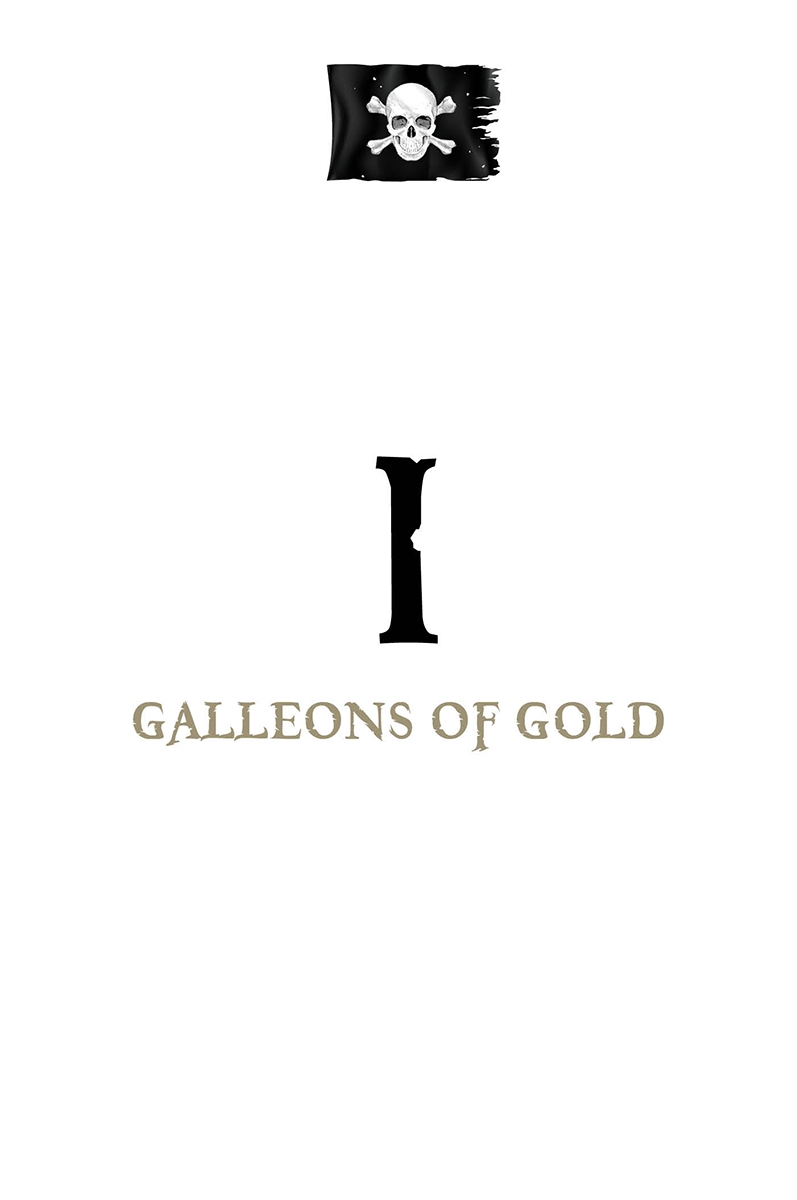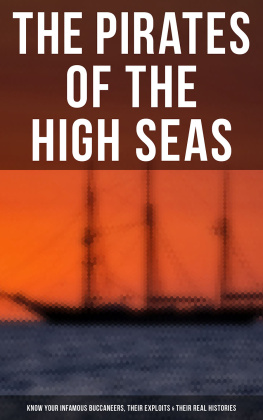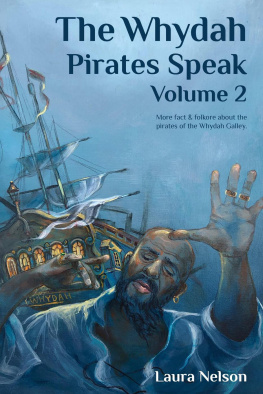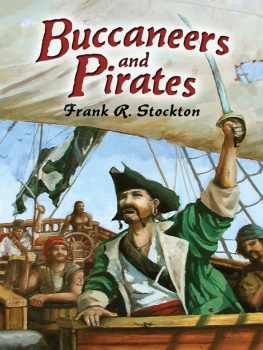Sam Jones - The Pirates
Here you can read online Sam Jones - The Pirates full text of the book (entire story) in english for free. Download pdf and epub, get meaning, cover and reviews about this ebook. year: 2016, publisher: New Word City, genre: Adventure. Description of the work, (preface) as well as reviews are available. Best literature library LitArk.com created for fans of good reading and offers a wide selection of genres:
Romance novel
Science fiction
Adventure
Detective
Science
History
Home and family
Prose
Art
Politics
Computer
Non-fiction
Religion
Business
Children
Humor
Choose a favorite category and find really read worthwhile books. Enjoy immersion in the world of imagination, feel the emotions of the characters or learn something new for yourself, make an fascinating discovery.
The Pirates: summary, description and annotation
We offer to read an annotation, description, summary or preface (depends on what the author of the book "The Pirates" wrote himself). If you haven't found the necessary information about the book — write in the comments, we will try to find it.
Sam Jones: author's other books
Who wrote The Pirates? Find out the surname, the name of the author of the book and a list of all author's works by series.
The Pirates — read online for free the complete book (whole text) full work
Below is the text of the book, divided by pages. System saving the place of the last page read, allows you to conveniently read the book "The Pirates" online for free, without having to search again every time where you left off. Put a bookmark, and you can go to the page where you finished reading at any time.
Font size:
Interval:
Bookmark:

As long as ships have sailed the seas, men have laid in wait for them, seeking to seize their treasures. These pirates and privateers - convicts, expatriates, seamen, and soldiers supported themselves by pillaging and plundering, often at the blade of a knife or the barrel of a pistol. Sometimes they acted alone, sometimes at the behest of wealthy and powerful patrons.
Piracy dates back to the days of ancient Greece and Rome when richly laden triremes wooden ships with three rows of oars plied the Mediterranean Sea. In the eighth century, Vikings from Scandinavia sent their dragon-prowed vessels across the North Sea to plunder vulnerable countries to the south: England, France, Ireland, Italy, and Scotland. Throughout the middle ages , European merchant ships were never free from the threat of the ubiquitous sea bandits.
Among the most colorful - and chronicled - were those who flourished in the turquoise waters of the Caribbean. Their ascendancy paralleled that of the European explorers, who, beginning in the 1490s, voyaged to the New World and claimed the lands they found for the kingdoms of Spain and Portugal.
As the immense galleons of the two nautical superpowers carried home rich cargoes of gold, silver, and precious gems, pirates of all nationalities stalked them, eager to loot their precious cargoes.
As tales of the treasures to be had in the new lands began to circulate in Europe, adventurous men of many nations set sail to seek their fortunes in the Caribbean: paupers and peasants, unemployed seamen and soldiers, convicts and runaway slaves. From this motley crew, privateers and pirates were recruited.
Pirates and privateers were not the same, although the distinction between the two was frequently blurred. A pirate (from the Greek word peiran , meaning to attack) was an outlaw who illegally plundered ships of all nationalities, including his own. A privateer, on the other hand, purchased, staffed, and provisioned his own ships - usually a man-of-war and operated within the purview of a recognized government. Privateers were issued a letter of marque - a document authorizing them to attack enemy ships and relieve them of their cargoes. Privateers and their crews collected their pay from the bounty they seized and set aside a percentage for the monarch under whose colors they sailed.
The history behind Western piracy and privateering is fraught with religious antagonism. The schism between the Protestants and Catholics of Europe in the 1500s and 1600s greatly influenced future events in the West Indies and Latin America. The Spanish viewed themselves as defenders of the Roman Catholic faith and bitterly opposed the growing forces of Protestantism in England, France, Germany, and Holland. Spain also oppressed the German states that embraced Protestantism after Martin Luther broke with Rome in 1517 and meddled in the religious wars fracturing France, hoping to prevent the Huguenots (French Protestants) from coming to political power. Holland, after eighty years of revolt against its Spanish masters, would gain its independence in 1648. England was Europes leading Protestant nation in the seventeenth century and a major impediment to Spains desire to see all European nations return to Catholicism.
As a result of this religious strife, many privateering expeditions sent out by England - led by such naval luminaries as Sir John Hawkins, Sir Francis Drake, and Sir Richard Grenville - were accused of piracy by the infuriated Spanish whose ships they looted and whose towns they sacked.
But it was gold, not religion, that sent most of the sea raiders west to the Caribbean. When Hernn Corts landed on the coast of Mexico in 1519 and Francisco Pizarro arrived in Peru twelve years later, they were greeted by Indians adorned with gold and silver ornaments. The Spaniards, overjoyed at finding vast stores of the precious metals, forced the Indians to work the mines for Spain.
Mining for precious silver and gold in the Spanish possessions reached an extraordinary scale. By 1550, the production of silver at the Potosi mines in Peru exceeded that of the rest of the world combined. In addition to Potosi, which is now part of Bolivia, the most productive mining centers of the Spanish New World were Guanajuato and Zacatecas in New Spain (Mexico) and Huancavelica in Peru.
The Spanish colonists created a massive, labor-intensive, and often dangerous enterprise. In some mines, the ore was carried to the surface using buckets on a pulley; in others, Indians climbed in and out of the pits on ladders with bags of ore strapped to their backs. Working in the heat and damp underground, thousands of natives died.
Once the silver and gold was smelted, the Spaniards cast the purified metal into bars, or ingots; the silver blocks weighed as much as seventy-five pounds, the gold between seven and ten.
Much of the gold and silver mined in Mexico and Peru was minted into crudely shaped coins struck with the Spanish coat of arms. Though irregular, these coins were considered legal tender if any part of the design showed and they were approximately standard weight. The gold coins - called doubloons because they were equal in value to two ducats, a commonly used European currency at the time - were later struck with the likenesses of Spains King Ferdinand and Queen Isabella. The silver coins, known as pieces of eight, were worth eight Spanish reales.
The Spaniards carried tons of gold and silver back to Spain on cargo ships called galleons - high-sided vessels with three or four decks - armed with cannon and swivel guns, making them heavy and unwieldly despite their great square sails. The forecastles and sterncastles of these massive ships were often decorated with gold scrollwork, making them easily identifiable to thieves at sea.
The Spanish fleets carried more than gold and silver. Spains colonies in the West Indies and Latin America needed myriad provisions from the Continent - tools, nails, horses, pigs, cattle, clothing, flour, lard, spices, and wines as well as soldiers to man the forts, officials to govern, priests, settlers, and craftsmen.
Beginning in 1530, two fleets of galleons set sail from Spain at least once a year, usually from Seville or Cdiz, cities granted the exclusive right by the Crown to engage in trade with the New World. One of the two fleets, known simply as the galeones , headed for Tierra Firme , the southern portion of the so-called Spanish Main: Spains coastal possessions in the Caribbean and the Gulf of Mexico. The galeones stopped at Cartagena, Colombia, and Portobelo, Panama. The second fleet, the Flota , sailed for Veracruz, Mexico. Guarding these fleets were heavily armed men-of-war, necessary to protect them from Barbary pirates in the waters near Spain and buccaneers prowling the islands of the West Indies.
When the galeones arrived at Cartagena, they took aboard gold, emeralds, pearls, indigo, tobacco, and coffee brought from the Spanish Main. Then they sailed to Portobelo to load treasure from Peru that had been shipped to Panama, loaded on mules, and carried across the Isthmus to the Caribbean shore. They then returned to Cartagena, where they remained for about ten days before sailing to Havana to meet the Flota .
The Flota , meanwhile, loaded its ships with Mexican silver before sailing to Acapulco, where it met the annual Manila galleon that had sailed across the Pacific carrying cargo from the Philippines. After taking on its payload, the Flota embarked on the eighteen- to twenty-day journey to Havana, where it met up with the galeones .
Once in Havana, the combined fleets headed north, sailing through what is now Key West, at the southern tip of Florida, then up through the Bahama Channel and into the open ocean. With luck and favorable weather, the galleons would arrive safely in Spain two months later.
Font size:
Interval:
Bookmark:
Similar books «The Pirates»
Look at similar books to The Pirates. We have selected literature similar in name and meaning in the hope of providing readers with more options to find new, interesting, not yet read works.
Discussion, reviews of the book The Pirates and just readers' own opinions. Leave your comments, write what you think about the work, its meaning or the main characters. Specify what exactly you liked and what you didn't like, and why you think so.











